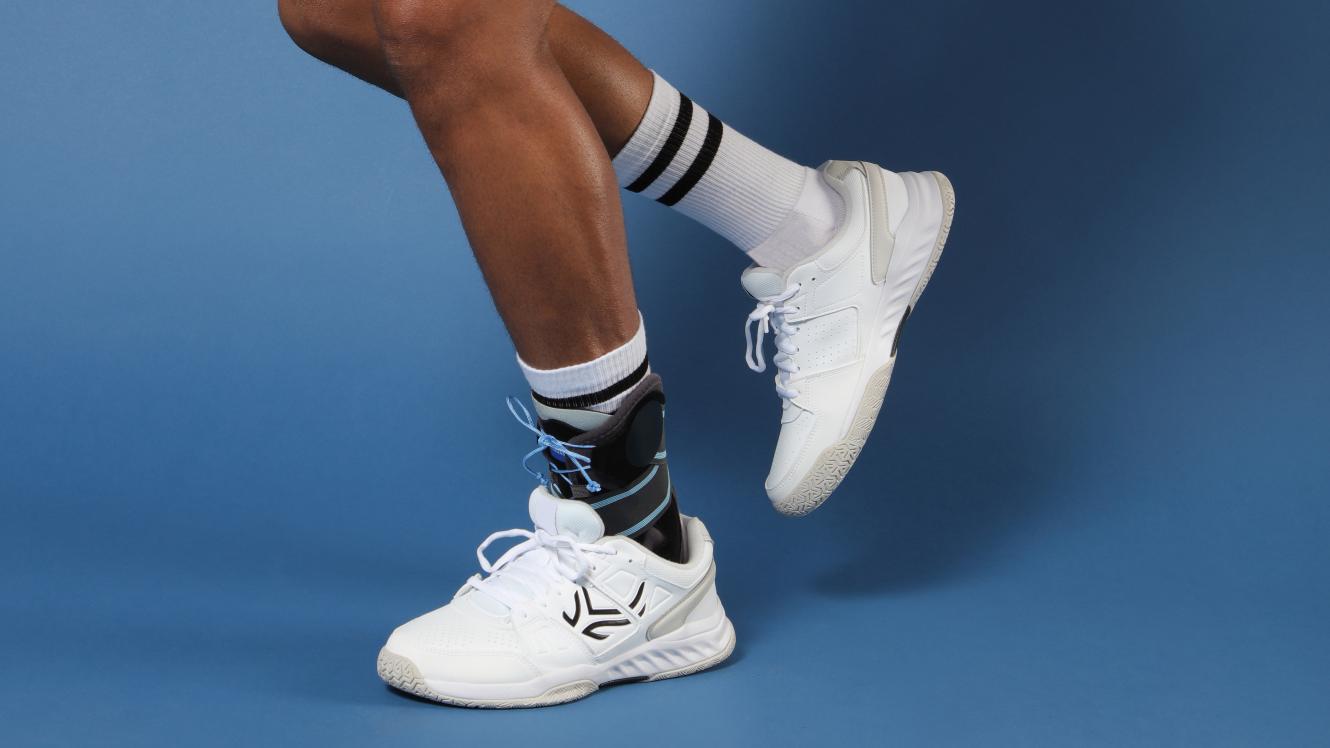The ankle
Ankle sprains are a common injury: there are 6000 of them every day in France! While this is the most common injury in this joint, the ankle can also be affected by fractures and inflammations, particularly of the Achilles tendon. More rarely it can be the site of arthritis.

The ankle is the joint between the leg and the foot. It is composed of a bone assembly including the extremities of the tibia, the fibula and the talus, surrounded by a fibrous capsule, ligaments (lateral, medial) and tendons (extensors, flexors) that provide mobility and stability.
Sprained ankle: a common injury
An ankle sprain is caused by stretching or tearing of the joint’s ligaments, primarily the lateral collateral ligaments. In 50% of cases these injuries occur during a sports activity1. The person feels a “crack” along with intense pain and swelling rapidly develops around the malleolus. Ankle sprains can be classified from mild, with stretching of a ligament, to severe when the ligaments are torn and/or there is also a fracture. Treatment consists of rest, with elevation of the affected limb, the application of ice, the application of a compressive bandage, painkillers and the use of walking sticks to get about. The ankle should be immobilised using a splint or walker boot for 1 to 3 weeks. For rehabilitation and resumption of activities, physiotherapy and wearing of an ankle brace are recommended. In the event of a fracture, surgery, the application of a plaster cast or walker boots may be required.
Tendinitis and Achilles tendon rupture
Tendinitis of the Achilles tendon is an inflammation of the tendon between the calf muscle and the heel, affected by repetitive movements or excessive strain. 70% of cases concern sportsmen between the ages of 40 and 75. The pain is felt in the heel at the start of training or after exercise. Treatment includes rest, the application of cold, and the wearing of heelpieces or an ankle brace to reduce the load on the tendon. An Achilles tendon rupture occurs when the strain becomes excessive. it is accompanied by a snapping perception and sharp pain, as well as the inability to put the foot on the ground. Surgery and the wearing of a walker boot are often necessary in order to repair the tendon and immobilise it until it has healed.
Osteoarthritis of the ankle
Wear and tear of the ankle cartilage is affected by old injuries or a foot deformity. Osteoarthritis is manifested by pain when mobilising the ankle and stiffness. Treatment is based on correction of excess weight if this exists, anti-inflammatories and painkillers, physiotherapy and the wearing of orthotic insoles.